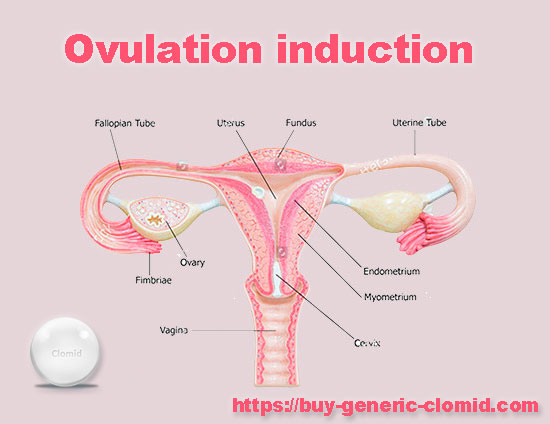What is ovulation induction?
Ovulation induction is an artificial stimulation of the egg maturation process with the help of medications.
What are the indications for ovulation induction?
Ovulation induction is carried out according to strict indications, since the drugs used for this have many serious side effects in women of certain categories:
- For the treatment of amenorrhea in some cases
- To stimulate ovulation in women with anovulatory cycles
- To regulate the cycle in women with irregular menstrual cycles
(oligomenorrhea) - To obtain several eggs in the ovaries of women preparing for IVF (in vitro fertilization) or intrauterine insemination (superovulation).
Healthy women with regular menstrual cycles are not recommended to carry out ovulation induction.
What methods can determine the presence of ovulation?
There are several methods for determining ovulation. Ovulation tests are becoming more popular due to the ease of implementation. They are based on determining the level of LH in a woman’s urine using special strips. The growth and peak of LH levels is observed 32-36 hours before ovulation. Usually, this test is used 2-3 days before the expected ovulation (in women with a 28-day cycle – from 12 to 15 days). In women with irregular cycles, the test should be used from the 11th to the 20th day of the cycle. Ovulation in such women can be confirmed within 5 days in 85% of cases, and within 10 days in 95% of cases. Sometimes ovulation may be absent, which happens normally, however, if ovulation is absent for 2-3 cycles, you need to consult a doctor.
Another method of determining ovulation is ultrasound. Ovulation usually occurs with a follicle size of 1.8‑2.5 cm. This method is more reliable if several ultrasounds are performed in the middle of the cycle every other day. The same method is used by many doctors to control ovulation in infertility clinics. A less common method is an endometrial biopsy with histological examination, which is performed the day before the expected menstruation. This method also allows you to determine the readiness of the endometrium for possible implantation of the fetal egg. Some doctors suggest measuring the level of LH and estradiol in the blood for several days of the cycle. Less and less often women use basal body temperature measurement, since this is not the most reliable method for determining ovulation.
Other questions about ovulation induction in women
Is it possible to use ovulation induction in women who have borderline ovarian tumors removed?
According to new research, it is considered safe to conduct ovulation induction in women after removal of borderline ovarian tumors.
What are the methods of ovulation induction?
Ovulation induction is carried out by one or a combination of several medications, which include clomiphene citrate, FSH, hCG, MGH (human menopausal gonadotropin), bromocriptine, cabergoline, gonadotropin-releasing hormone and its analogues, LH and a number of others.
What are the indications for clomiphene citrate induction?
There are not so many indications for ovulation induction, although many doctors have been abusing this method recently. Induction is indicated for women with rare menstruation or lack of menstruation, those who cannot find out the cause of infertility, with moderate endometriosis, or according to the requirements of the women themselves. The standard dose is 50 mg, for 5 days at the beginning of the cycle. The level of ovulation, pregnancy and the outcome of pregnancy are the same if induction is started on the 2nd, 3rd, 4th or 5th day of the cycle. The doctor should monitor the effectiveness of induction. This can be done by ultrasound, measurement of basal body temperature, determination of the level of estrogen in the blood.

When does ovulation occur after the use of clomiphene citrate?
Ovulation occurs most often 5 days after the last dose of clomiphene citrate is administered, however, in many women ovulation can occur from 10 to 23 days of the cycle, so in such cases it is important to monitor the development of follicles using ultrasound.
What are the side effects of using clomiphene citrate that can hinder pregnancy?
Since clomid is an antiestrogenic drug, it can cause inferiority of cervical mucus, which is very important in the fertilization process, and create a barrier to sperm. Even with successful ovulation, such women may have difficulty conceiving due to the artificial cervical factor of infertility created by doctors. Therefore, to control the quality of cervical mucus, experts recommend conducting a postcoital test in the first half of the cycle after each induction with clomiphene citrate. Another negative result of using clomiphene is a decrease in the quality of the endometrium: it becomes thin and of poor quality for successful implantation of the fetal egg. Some side effects are associated with the occurrence of hot flushes (10% of cases), visual impairment, vaginal dryness, hyperstimulated ovarian syndrome. In 10% of cases, there is a double pregnancy (twins). Some women may experience the growth of ovarian cysts, so before conducting a course of ovulation induction, it is necessary to conduct an ultrasound of the ovaries. Insufficiency of the luteal phase is also not a rare side effect when using clomid (observed in 50% of cases).
When is ovulation induction with clomiphene citrate contraindicated?
Induction of ovulation with this drug is contraindicated in the presence of ovarian cysts, pregnancy, liver diseases.
Fantastic content on this internet site, thanks!